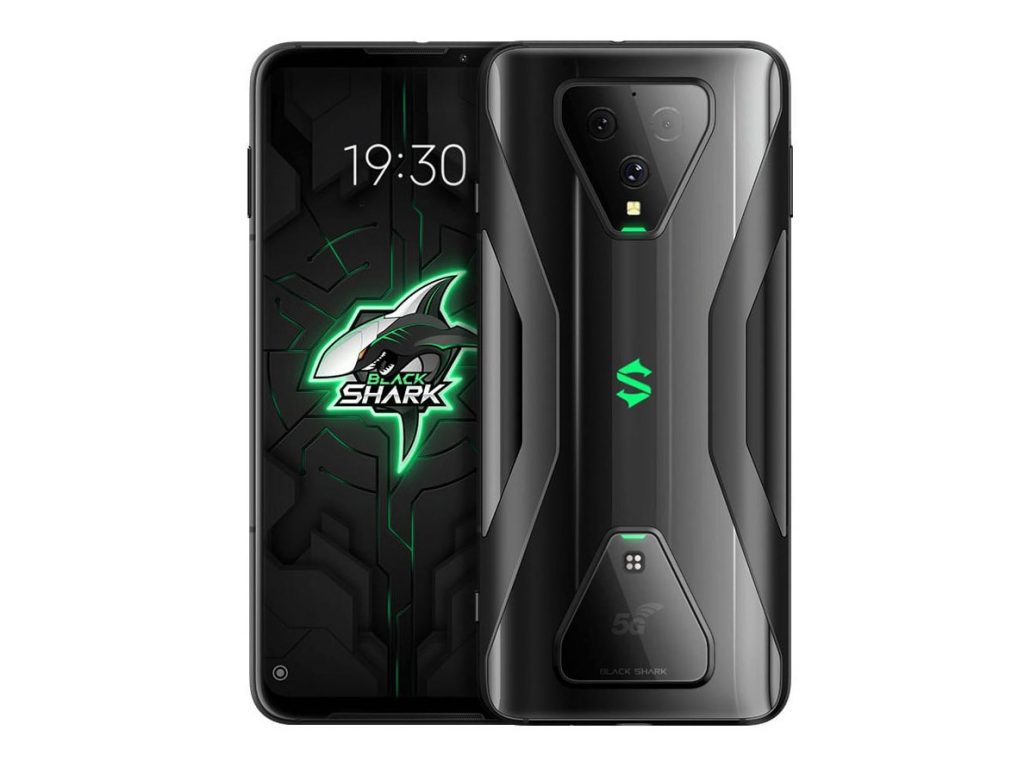The Xiaomi Black Shark 3 Pro, which first appeared on the market in spring 2020, is explicitly designed for gamers, its sleek ergonomic design housing a powerful Snapdragon 865+ processor and lots of battery life. Thus far, we have published its performance results only for audio; in this review, we present a summary of how well it did in our new Display test protocol.
Key display specifications:
- 7.1-inch AMOLED screen, 19.5:9 aspect ratio
- No notch
- Resolution: 1440 x 3120 px; screen pixel density: 484 ppi
- Refresh rate: 90 Hz
About DXOMARK Display tests: For scoring and analysis in our smartphone and other display reviews, DXOMARK engineers perform a variety of objective and perceptual tests under controlled lab and real-life conditions. This article highlights the most important results of our testing. Note that we evaluate display attributes using only the device’s built-in display hardware and default apps. (For in-depth information about how we evaluate smartphone and other displays, check out our articles, “How DXOMARK tests display quality” and “A closer look at DXOMARK Display testing.”)
Test summary
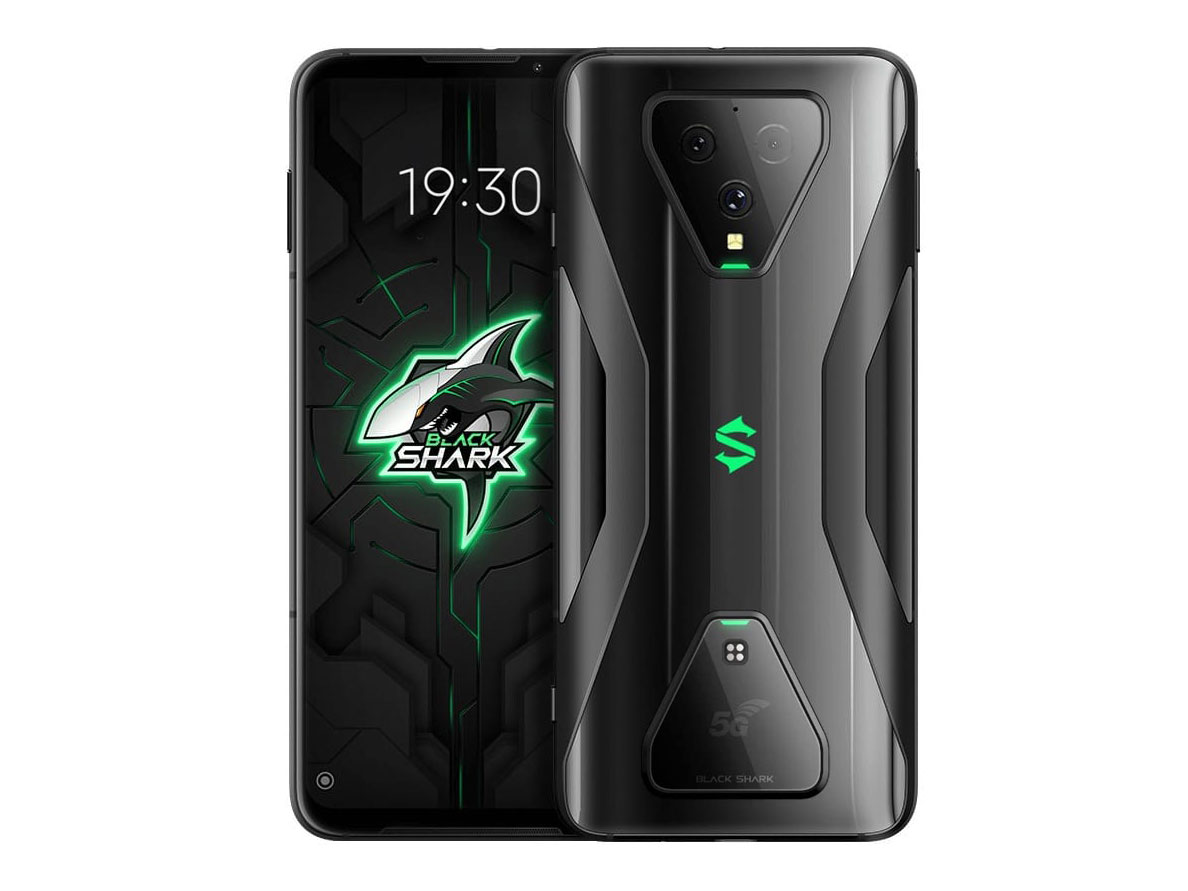 Black Shark 3 Pro
Black Shark 3 Pro


Hmm, where to begin? With an overall score of 61, the Xiaomi Black Shark 3 Pro comes in right at the very bottom of our Display rankings so far — a full 10 points behind the next lowest (the Asus ROG Phone 3), due in large part to its poor showings in our readability and color testing, and especially because of its performance for video. In fairness, Xiaomi designed and markets its latest Black Shark offering as a gamer’s smartphone, and its relatively high 90 Hz refresh rate reflects this choice. Indeed, its strongest points are its control of aliasing and its good performance in our motion and touch attribute tests, where for the latter in particular, it showed good accuracy and smoothness — important characteristics for serious gamers.
Our highly trained display experts found the Black Shark 3 Pro’s display dark in all cases, and at its minimum default brightness settings at night, the screen was essentially unreadable. But the worst of the Xiaomi device’s test results were those for video, and in particular in the color subcategory, where its output was so dark that our testers could not perform any meaningful analyses.
Analyses and comparisons
The DXOMARK Display overall score of 61 for the Xiaomi Black Shark 3 Pro is derived from its scores across six categories: readability, color, video, motion, touch, and artifacts. In this section, we’ll take a closer look at these display quality sub-scores and explain what they mean for the user, and we will compare the Black Shark 3 Pro’s performance in several areas against its principal competitors, the OnePlus 8 Pro, the Samsung Galaxy Note20 Ultra 5G, and the Asus ROG Phone 3.

Readability
Black Shark 3 Pro
50
76
DXOMARK uses the device’s gallery app to show static (still image) content when measuring the device’s display for brightness, contrast, gamma, and blue light impact, etc.
The most important aspect of a display is how readable it is in various ambient lighting situations. Our testers found the Black Shark 3 Pro’s overall brightness when using the phone’s gallery app to be too low in pretty much all conditions — daylight, indoors, and at night. Indeed, its official specs claim a maximum brightness of 500 nits (candelas per square meter, cd/m2), which is a bit on the low end to begin with — but add to that a 10% loss of brightness when digital signal processing (DSP) is figured in (also per the official specs), it is not especially surprising that the Xiaomi device compares rather poorly to the other devices used for comparison in this review.
Below you can see the relationship between brightness and contrast under different lighting conditions. Note that when contrast decreases, it is due to the ambient light reflected by the device — the more intense the ambient light, the lower the device’s contrast, unless it can compensate by providing more luminance.
In our perceptual tests, the Black Shark 3 Pro display output in indoor conditions is noticeably darker than that for the other phones:

Outdoors, the Black Shark display remains too dark, making it difficult to discern details, especially viewed under direct sunlight. This said, of the four devices, only the OnePlus 8 Pro (first on left) puts in a noticeably better performance in bright daylight conditions (but even it falls outside the realm of acceptable):

The Xiaomi Black Shark 3 Pro responds smoothly and quickly enough to increases in light levels, but is quite slow to respond to decreasing light; further, it shows a significant drop in brightness at the lowest light levels (but then adjusts to a better level after a slight delay).
As for gamma (the relationship between the numerical value of a pixel in an image file and the brightness of that pixel when viewed on a screen), the graph below reveals that the Black Shark’s gamma performance is visibly lower than the other devices starting from around a gray level of 65% onwards, meaning that it loses details in the darkest areas of display content. (Note that you can click on any of the device names in the chart below to select or deselect them so you can see their individual results and/or compare one or more at a time as you wish.)
In terms of brightness uniformity, the Black Shark 3 Pro display shows a noticeable brightness gradient from right (top of phone) to left (bottom of phone), along with a greenish hue, as you can see below:
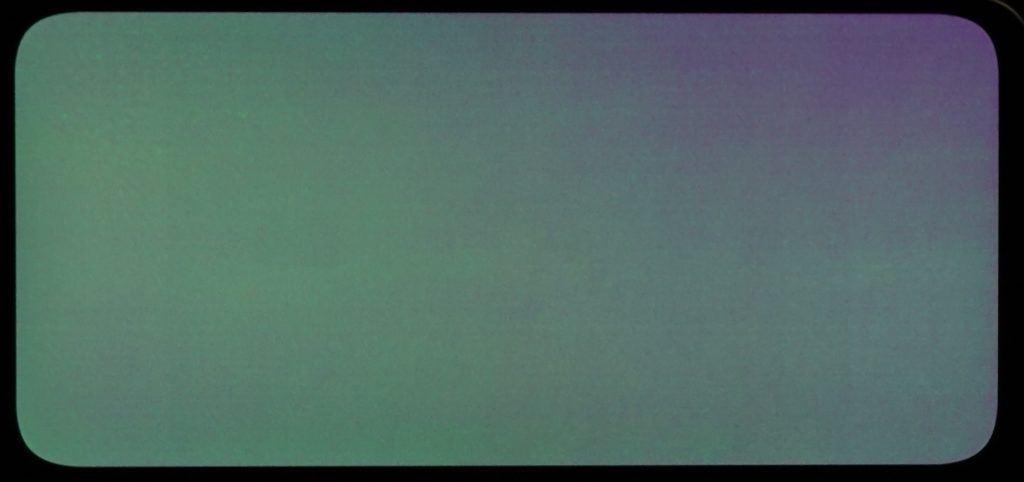
Gaming is one use case in which players look at the display on-axis, not at an angle, so does it matter that on-angle brightness and color are visibly dimmer on the Black Shark 3 Pro than on its competitors? Well, yes — after all, gamers browse the web, text, and take photos and videos, too! The graph below shows the results of our objective tests for brightness vs angle. The OnePlus device is better than the in this area because it loses brightness slower than the others, which tend to lose brightness the same way (that is, they show the same curves between -30° and +30°). Again note that you can click on any of the device names in the chart below to select or deselect them so that you see their individual results and/or compare one or more at a time as you wish.
While the graph does not make it clear that the other devices are brighter than the Black Shark 3 Pro, the photo comparisons below make it quite obvious that the Xiaomi display’s output, even on-axis, is perceptibly darker than output from the other tested devices:

Viewed at an angle of 45°, all devices lose some degree of brightness and color, but once again, the Xiaomi is noticeably dimmer and more difficult to read that the other devices:

Finally, the Black Shark 3 Pro struggled to provide enough brightness to be readable at its lowest settings, especially at night, regardless of whether the blue light filter (BLF) was turned off or on, as the comparisons below show:
Without BLF:
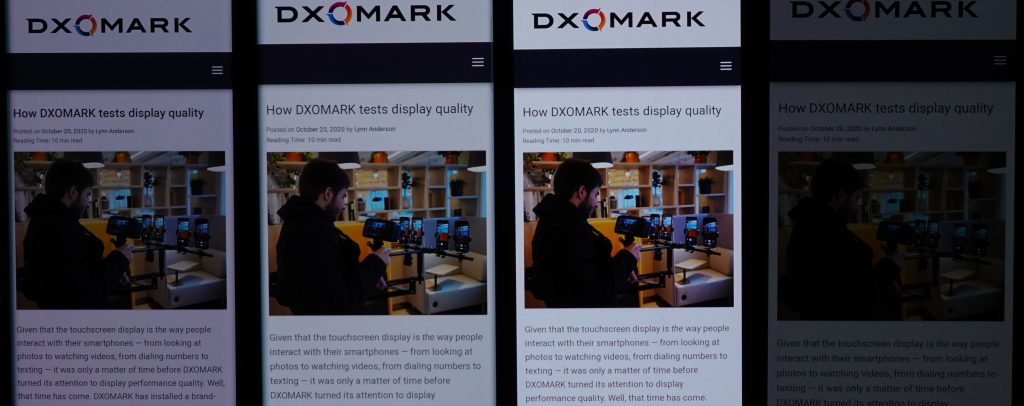
With BLF on (below), the Black Shark 3 Pro was not only dark, but took on a slightly orange cast (though not as pronounced a cast as on either the OnePlus or Asus phones):
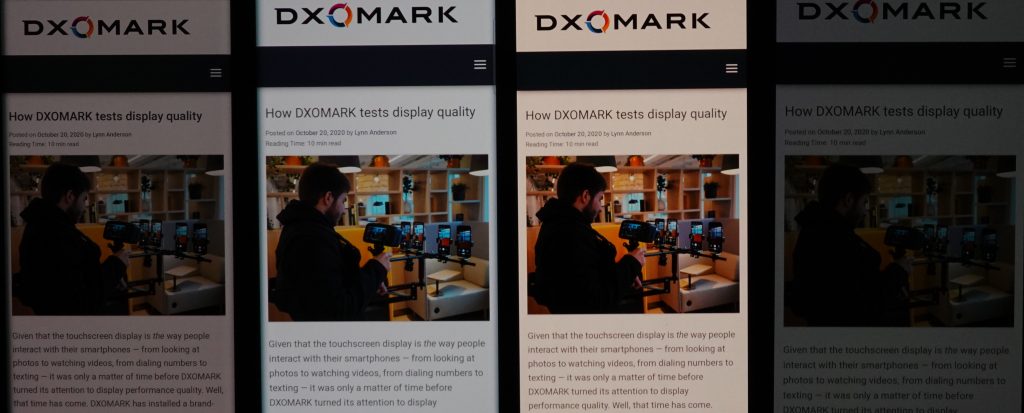

Color
Black Shark 3 Pro
59
92
DXOMARK uses the device’s gallery app to show static (still image) content when measuring the device’s display for white point, gamut, uniformity, color fidelity, and blue light filter impact, etc.
The Xiaomi Black Shark 3 Pro’s color rendering performance not only lagged behind that of the comparison devices in this review, but behind all tested devices in our Display database — coming in far behind even the Apple iPhone 11 Pro Max, which lost points because of a strong yellow cast. The Black Shark’s white point tends to be slightly orange, and it doesn’t correct its white point when the ambient illuminant changes. In the comparison shots for indoor color below, the OnePlus 8 Pro is the best, followed by the ROG Phone 3 and the Note20 Ultra 5G; the quality of the Black Shark’s rendering is visibly way off the pace:

Outdoors, the Note20 Ultra 5G and the ROG Phone 3 maintain their “just acceptable” standing (although the Xiaomi device tends to have a more pronounced orange cast), and once again, the OnePlus 8 Pro is the best among this group. The Black Shark’s lack of luminance continues to have an averse impact on its color rendering, especially outdoors.

Angle viewing
The overall field in the left-hand chart below shows the Xiaomi Black Shark 3 Pro’s color tendencies. In the right-hand chart (essentially a closeup of the left chart), each dot represents a measurement taken at a discrete angle and distance from the device; dots inside the inner circle exhibit no color shift in angle; those between the inner and outer circle have shifts that are just barely noticeable except by experts; but those falling outside the outer circle are noticeable.
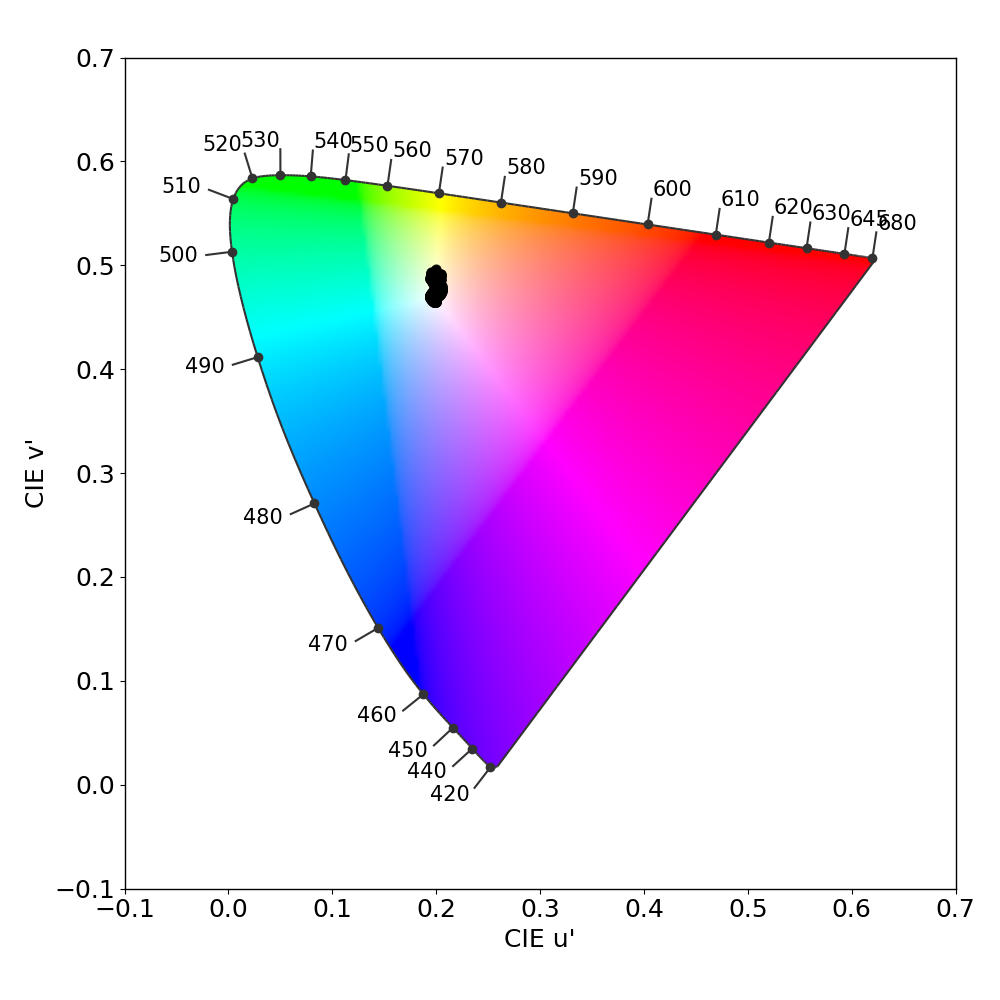
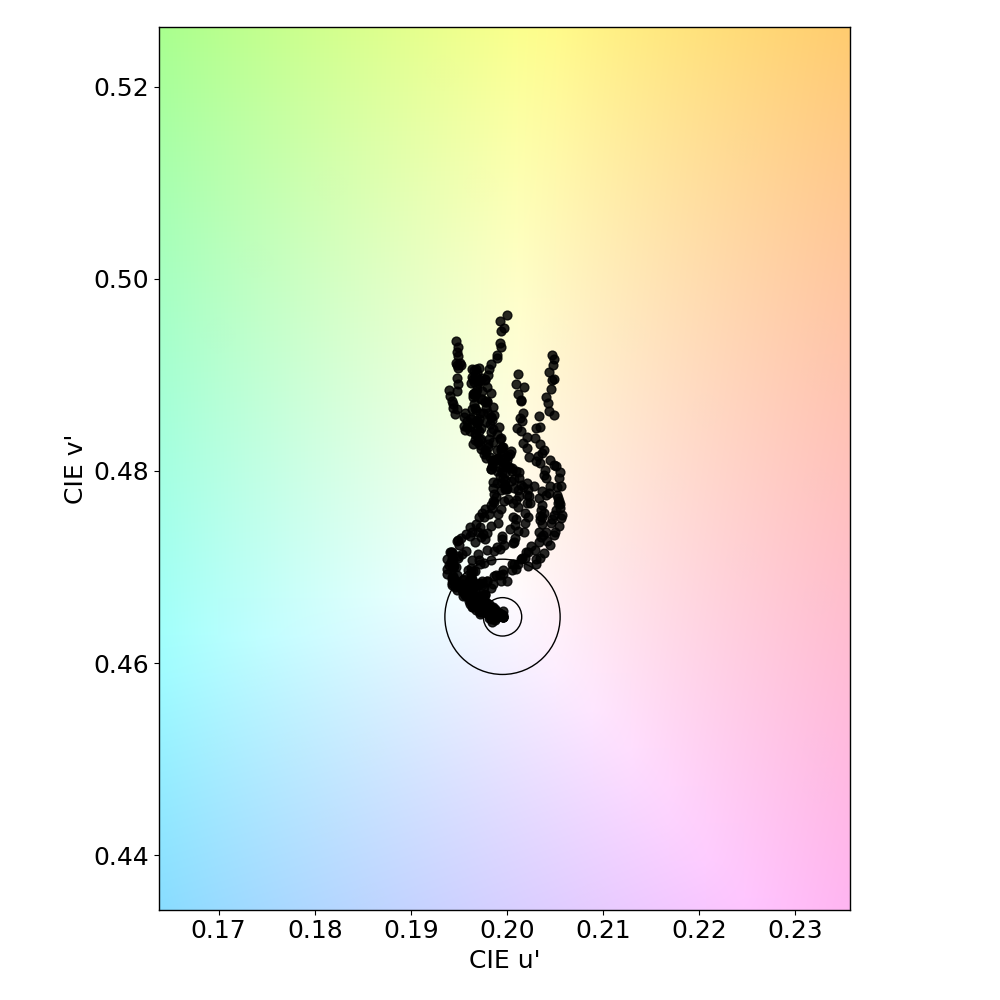
Our perceptual shots confirm the objective results above, with the Xiaomi device showing a shift toward green when viewed on-angle (second set of shots below; the Black Shark is the device farthest to the right in both sets).
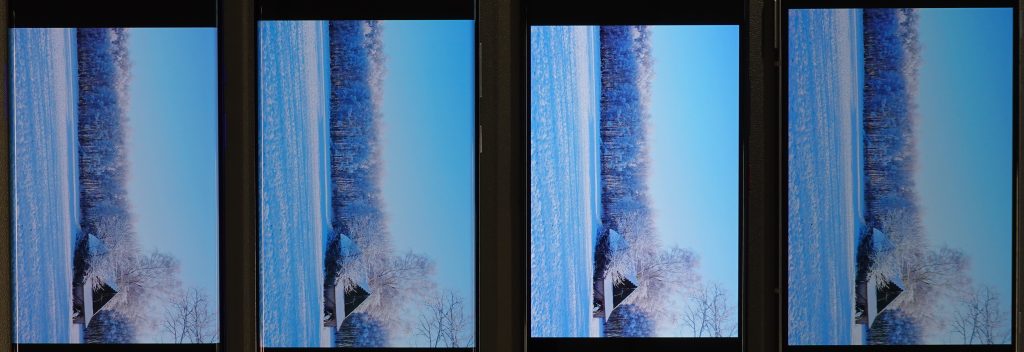


Video
Black Shark 3 Pro
31
91
DXOMARK uses the device’s video (or browser) app to show dynamic content when measuring the device’s display for brightness, contrast, gamma, and color.
As with its gallery app (single image) performance, the Xiaomi Black Shark 3 Pro display is too dark when watching videos, as you can see in the comparison shots below:
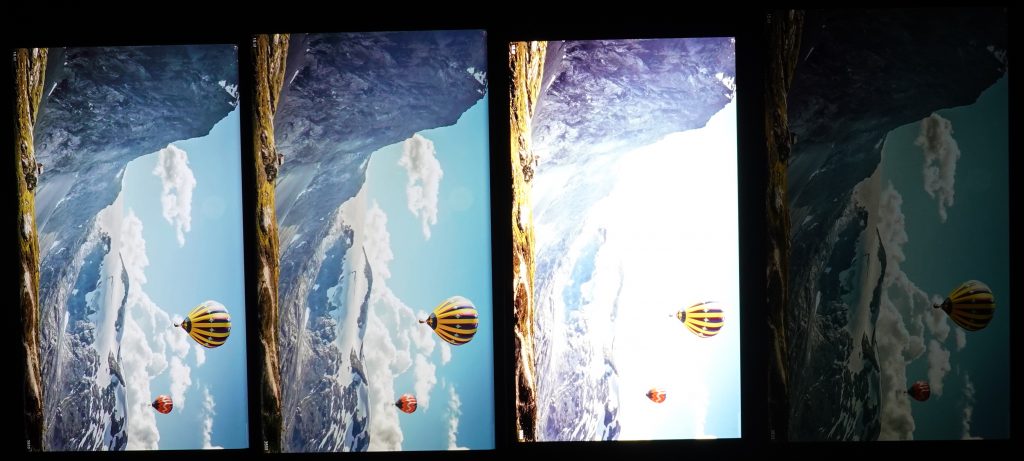
Furthermore, while it’s not alone in turning in a subpar performance for this sub-attribute, another consequence of the Xiaomi Black Shark 3 Pro low brightness is that it also struggles with contrast, displaying highlights that are far too dark in a frame that is already nearly invisible:
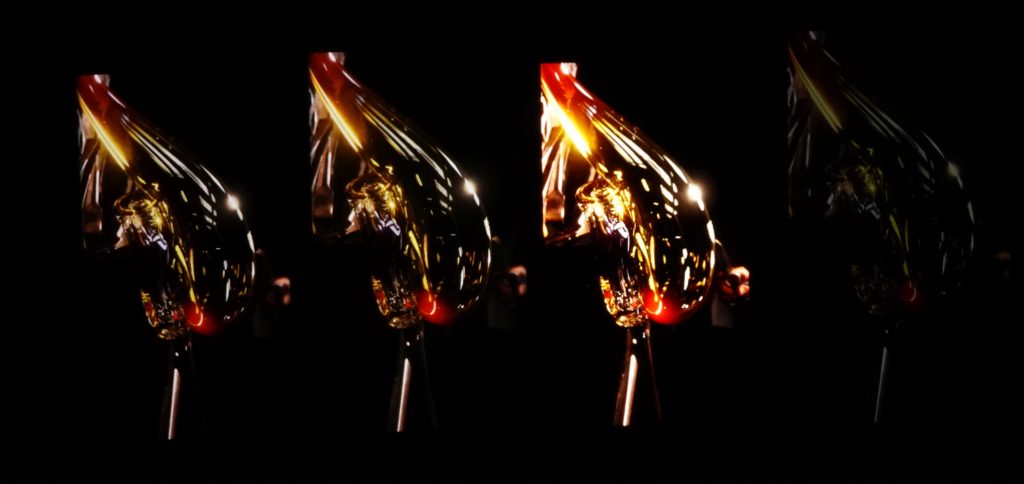
As for video gamma, and in keeping with its brightness and contrast results above, the Black Shark 3 Pro renders flat mid-tones, almost as if the gamma were centered on the darkest tones. For video color, however, the news is even worse, as our testers found the display’s brightness is too low to perform any video color rendering analysis, including for skin tones (second set of photos below).
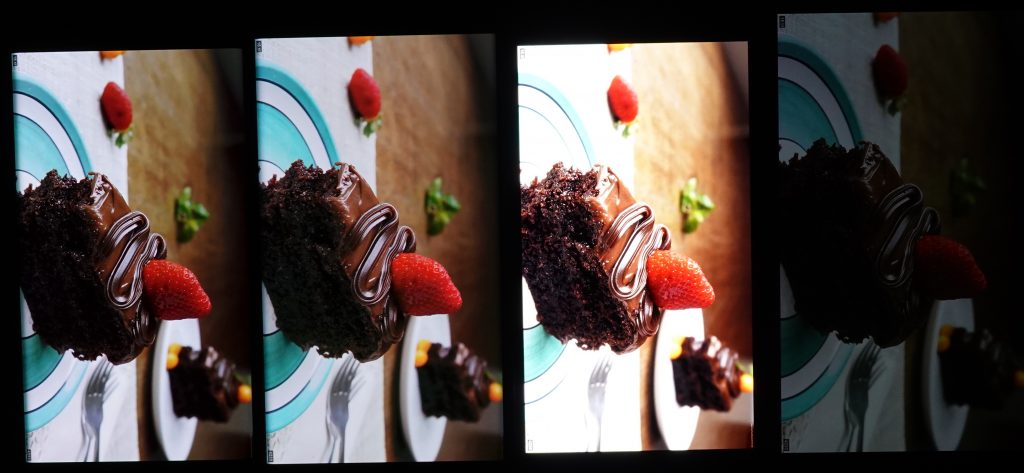


Motion
Black Shark 3 Pro
83
87
Compared to other attributes, the Xiaomi Black Shark 3 Pro did well for motion, tying for second with the OnePlus 8 Pro in our rankings so far. It objectively displayed very few frame drops at either 30 or 60 fps (FHD/SDR content), and no frame drops were perceptually visible during gaming. There were, however, some frame duplications that resulted in some noticeable motion blur.
Playback reactivity was slower than we expected, although the Black Shark 3 Pro can be quicker to react when moving the video slider.

Touch
Black Shark 3 Pro
74
85
For touch, too, the Xiaomi Black Shark 3 Pro is one of the three top scorers. While its sub-scores involving use cases processed with the gallery app (web browsing and viewing photos, for example) were not particularly impressive, its performance in our gaming use case, the Black Shark turned in a very satisfactory performance for accuracy, rubbing shoulders with both the Samsung and the Asus in this regard.
But if the Black Shark 3 Pro’s scores for accuracy were a bit average for gallery app uses (with the same being true for touch smoothness), our testers noted that the Black Shark had excellent touch smoothness when “driving” the car around in our use test based on a popular game — good news indeed for gamers!

Artifacts
Black Shark 3 Pro
76
86
The Black Shark 3 Pro doesn’t have a notch; instead, its front-facing features are located in a slender bezel above the screen, which slightly affects the screen-to-body ratio, calculated at 83.52%, but avoids any disturbance to gaming and video performance.
Although smartphone screens by their very nature all have some degree of reflectance, particularly in bright light, the Black Shark 3 Pro is unremarkably similar to other phones for this attribute.
All devices flicker to some degree; the Black Shark’s flicker is the worst of all tested devices so far, although it’s in the same general range as the Samsung and Asus; the Oppo is currently the best of the entire lot. This all said, flicker is not likely to affect most users’ viewing experience. (Click on any of the device names in the chart below to select or deselect them so you can see their individual results and/or compare one or more at a time as you wish.)
One of the Black Shark 3 Pro’s strongest showings in our tests was for its control of aliasing. All its competitor devices showed fairly strong “stair-stepping” along the curved contour edges in their images, but the Black Shark was by far and away much smoother, as you can see in the comparison closeups below.
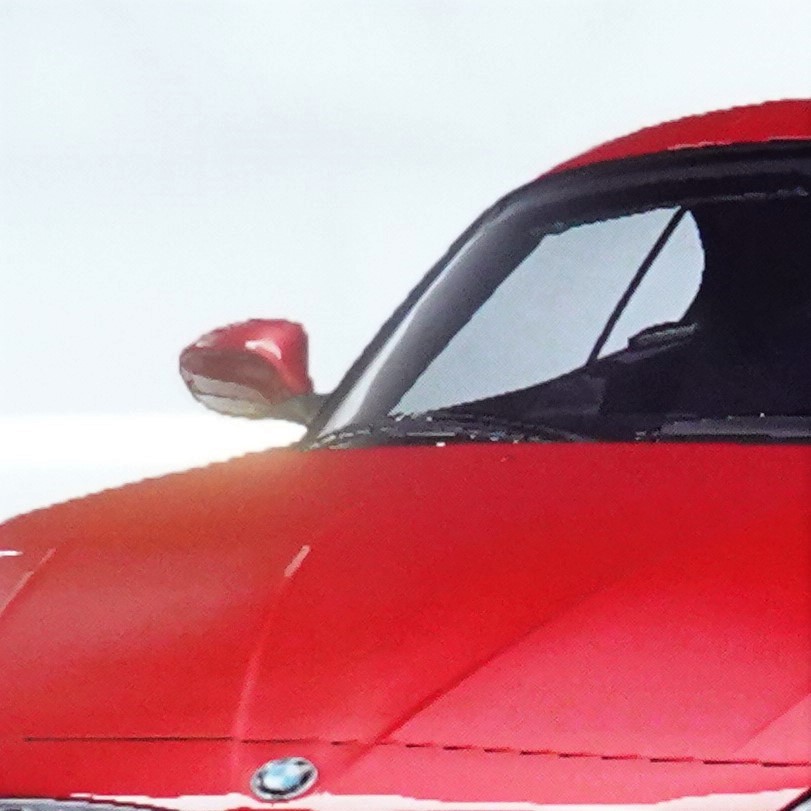
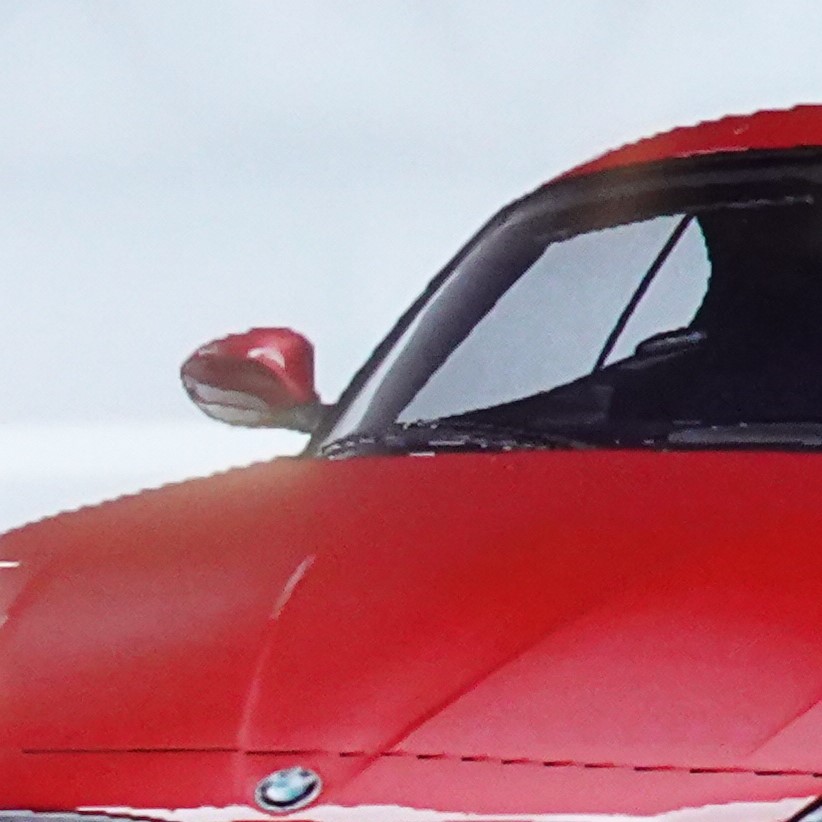
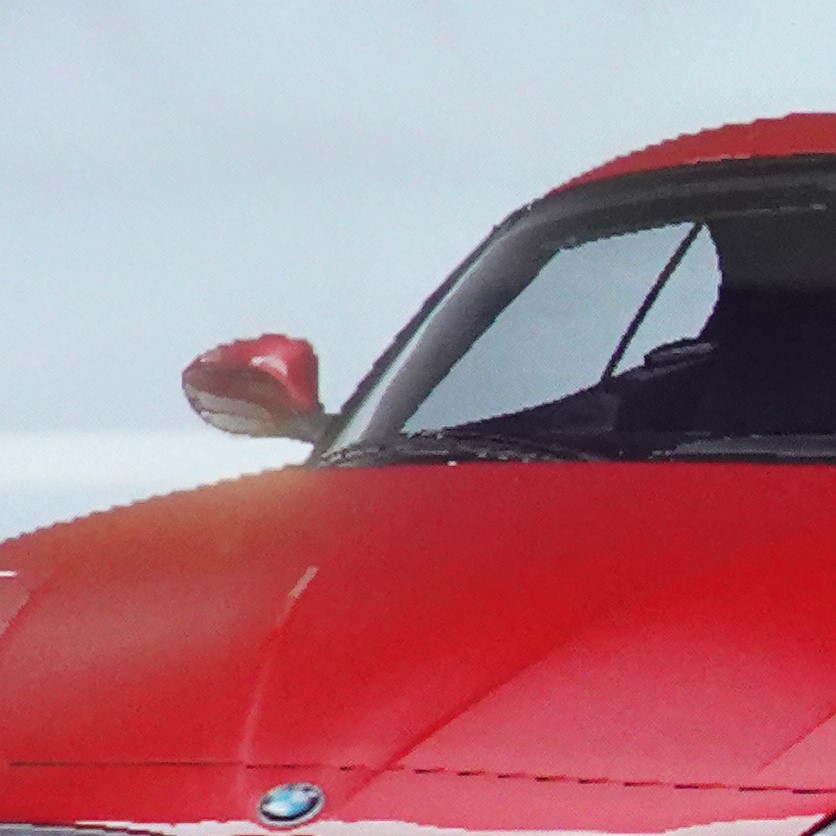
When a user unintentionally touches the Black Shark (that is, makes a ghost touch), it responds when it shouldn’t. It manages judder well for content at 30 fps or 60 fps, but like many phones, it struggled just a little with 3:2 pulldown (that is, properly handling a mismatch between the refresh rate and the frame rate with 24 fps content), though users are unlikely to notice this — and in fact, it was the best among the four devices in this regard.
Conclusion
Although some gamers may be perfectly happy with it, dark rendering in every ambient lighting condition proved to be a major problem for the Xiaomi Black Shark 3 Pro in our display tests. Its major strengths, that of having good control over aliasing artifacts and good motion and touch performance, are also of more interest to gamers than to the typical end-user at large, who may find its shortcomings in other attributes too important to overlook.
Pros
- Good touch accuracy and smoothness, especially when gaming
- No visible frame drops when gaming and very few when watching videos
- Well-managed aliasing
Cons
- Readability is low because of low brightness.
- Overall video performance is low.
- Colors are not accurate.
- Some problems with ghost touches


